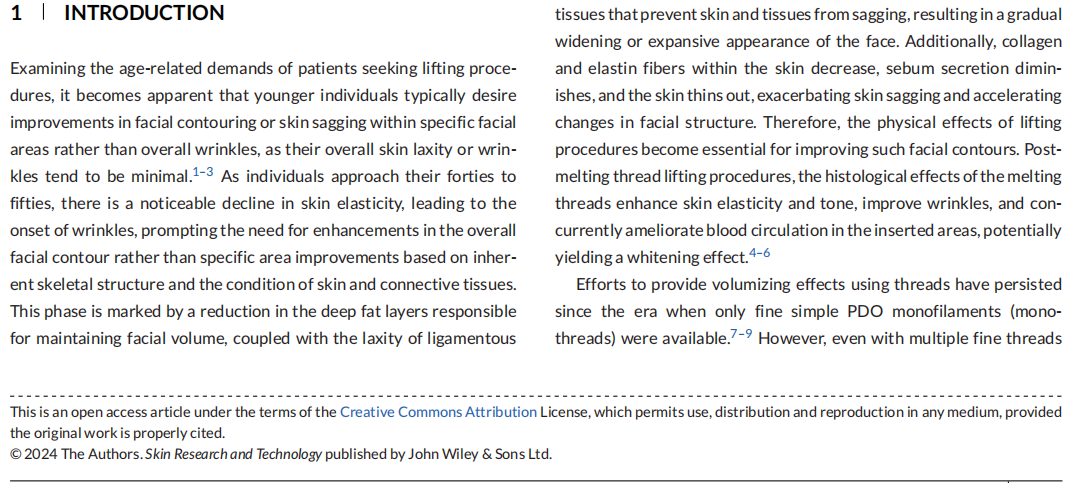
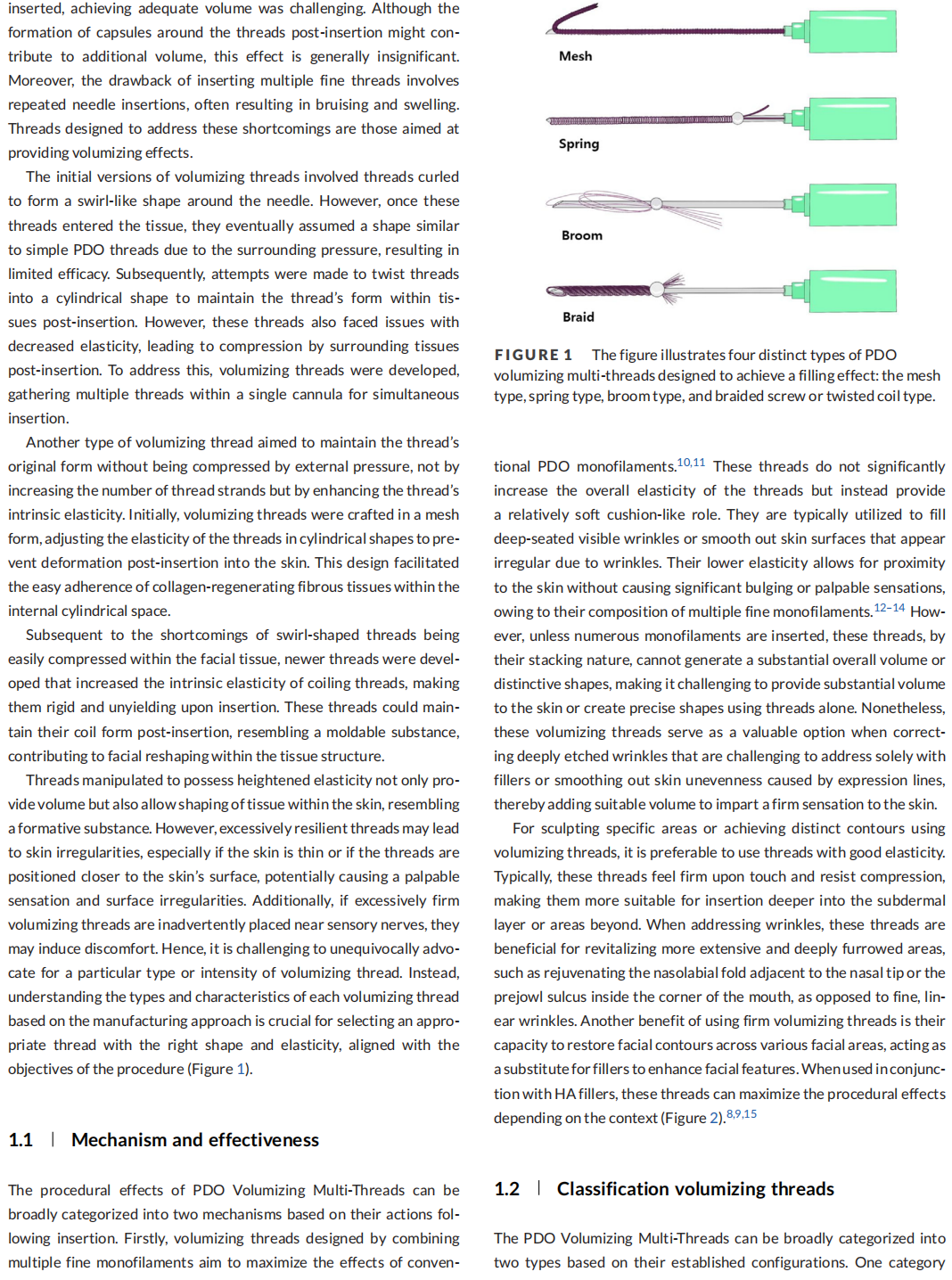
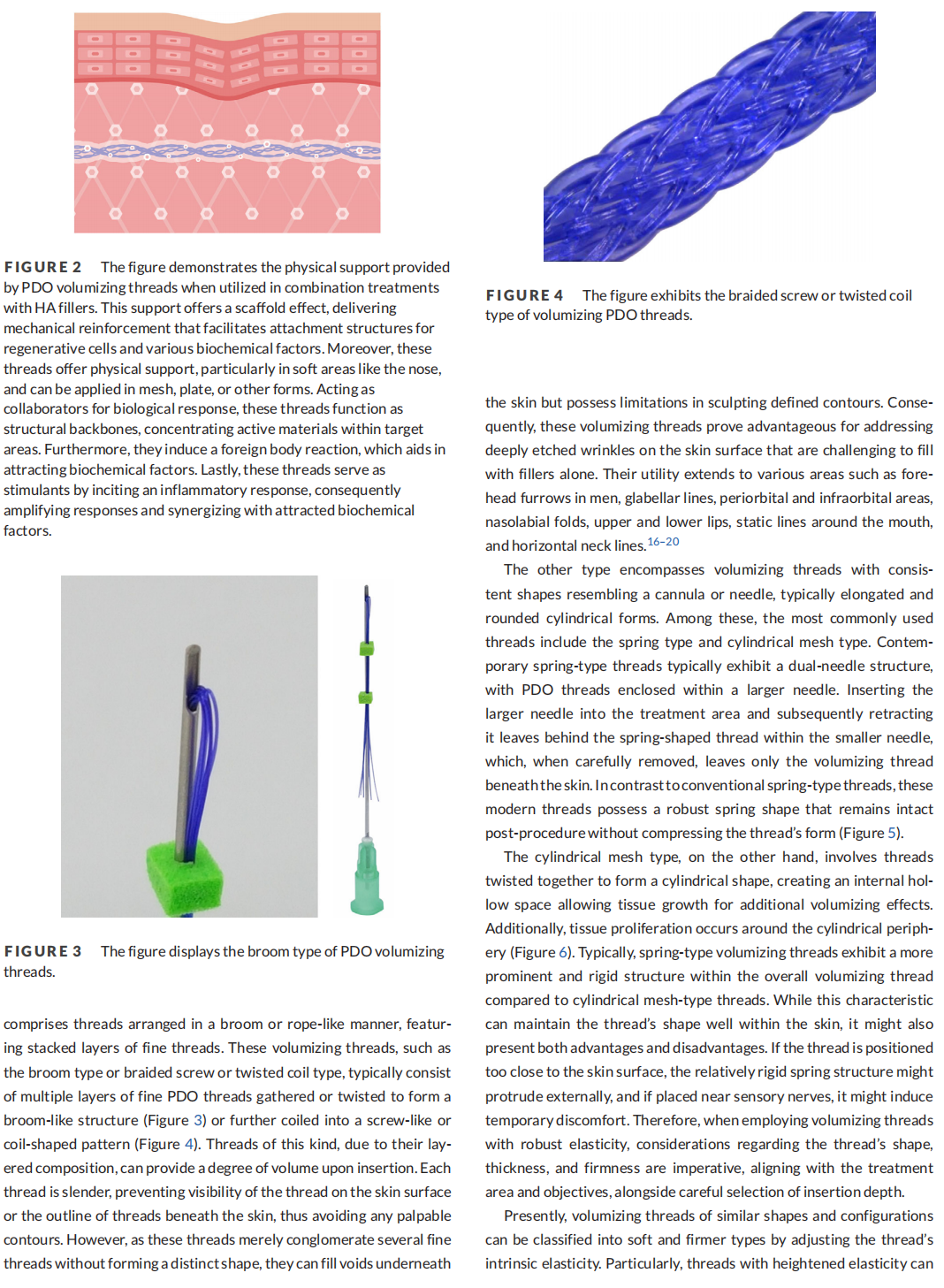
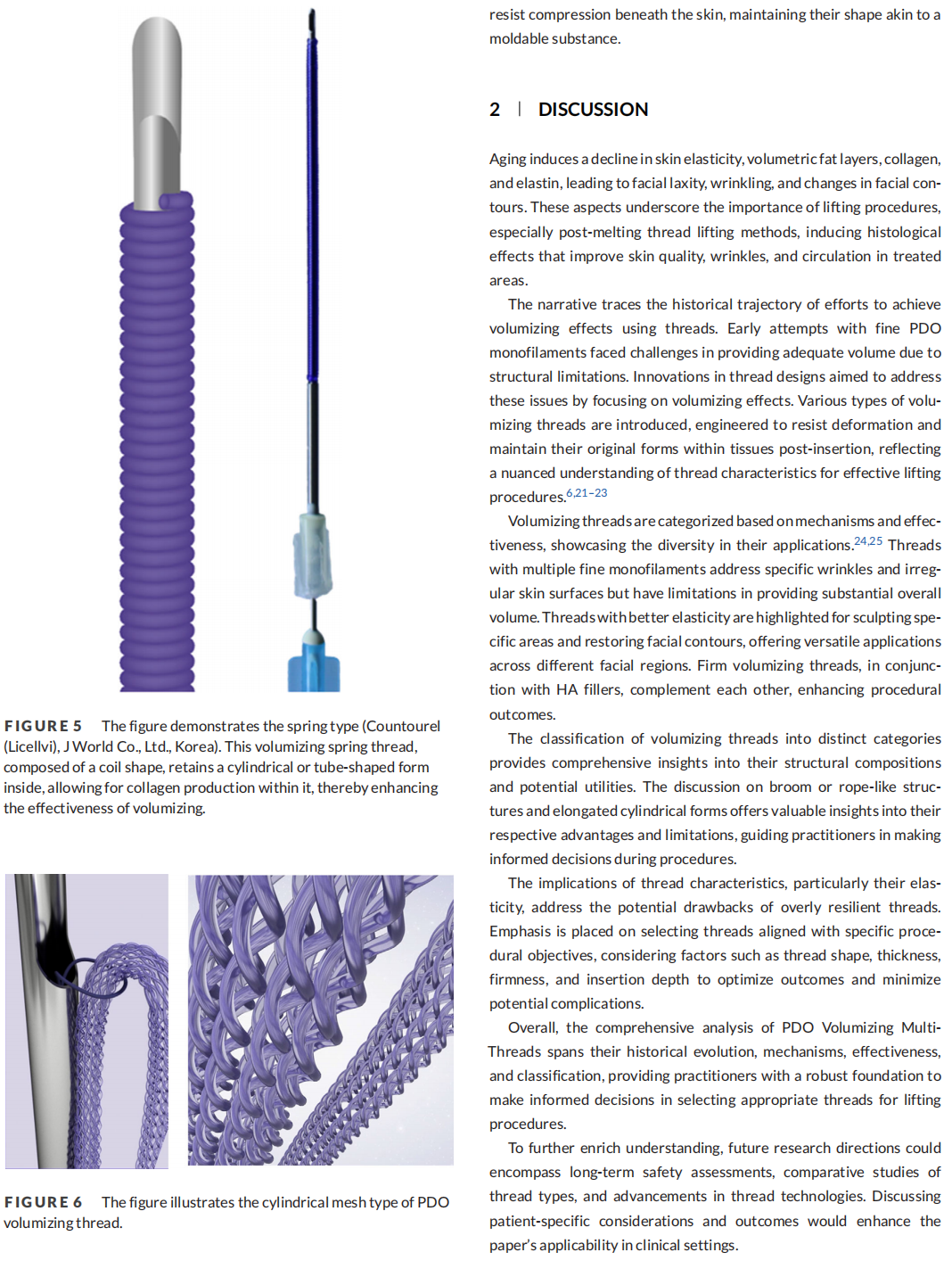
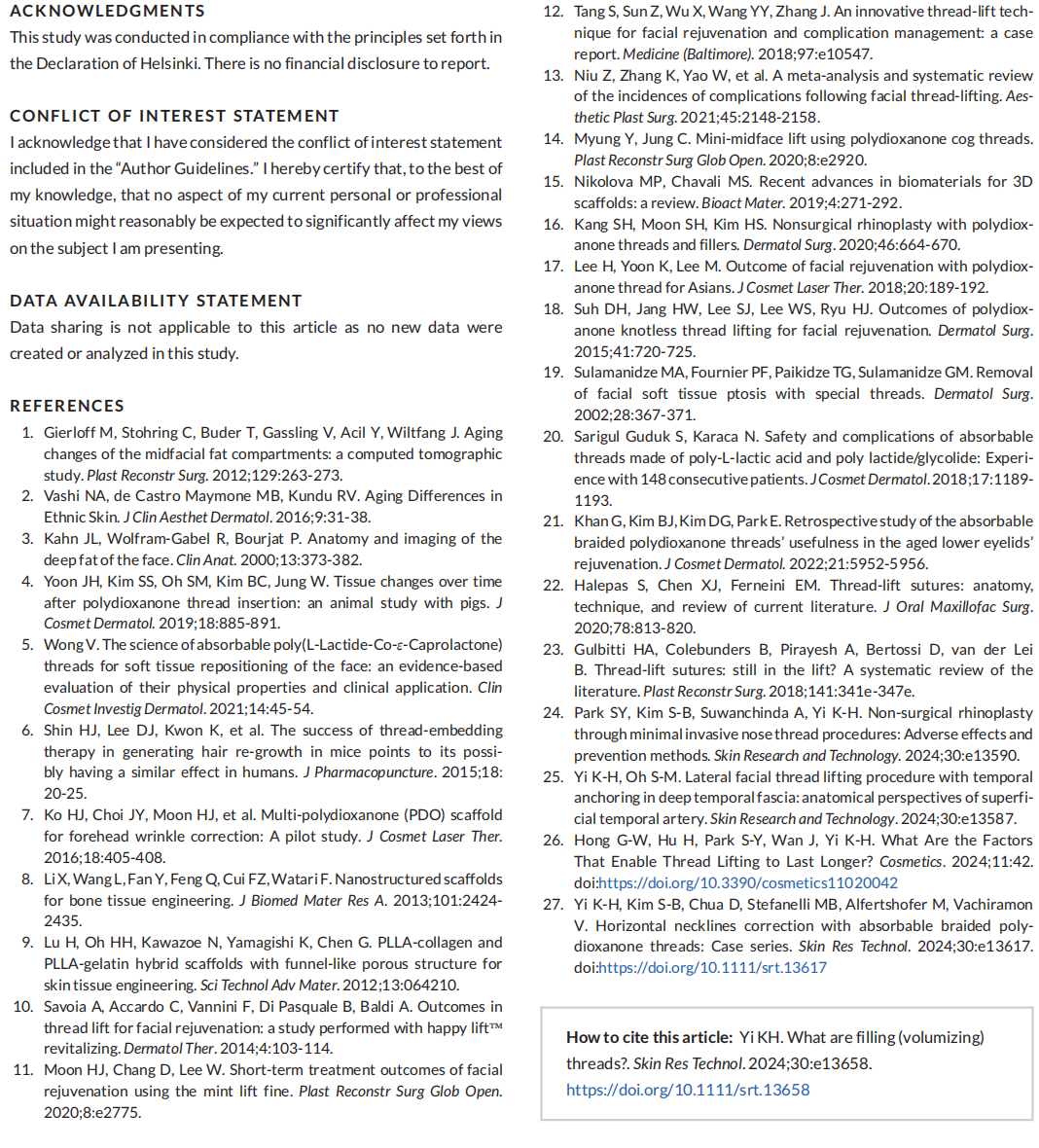
This article is excerpted from the Skin Res Technol. 2024;30:e13658 by Wound World.
Kyu-Ho Yi1,2
1 Division in Anatomy and Developmental Biology, Department of Oral Biology, Human Identification Research Institute, BK21 FOUR Project, Yonsei University College of Dentistry, Seoul, South Korea
2 Maylin Clinic (Apgujeong), Seoul, South Korea
Correspondence
Kyu-Ho Yi, Division in Anatomy and Developmental Biology, Department of Oral Biology, Yonsei University College of Dentistry, 50–1 Yonsei-ro, Seodaemun-gu, Seoul, 03722,
Email: 该Email地址已收到反垃圾邮件插件保护。要显示它您需要在浏览器中启用JavaScript。
Abstract
Facial aging prompts a shift in the demands for lifting procedures, transitioning from targeted improvements in younger individuals to overall facial contour enhancements as skin elasticity declines in later years. This paper examines the evolution of PDO volumizing threads, delineating their development from initial limitations to contemporary innovations aimed at addressing tissue deformation and maintaining thread integrity post-insertion. Categorizing these threads based on elasticity, shape, and functionality underscores their versatility and application nuances, catering to specific wrinkle correction, contour sculpting, and facial volume restoration. The discussion emphasizes the pivotal role of thread characteristics in achieving optimal outcomes while minimizing potential complications. By delving into historical contexts, mechanisms, effectiveness, and thread classification, this paper equips practitioners with a comprehensive understanding to make informed decisions in selecting threads for volumizing thread procedures. Recommendations for future research directions, including longterm safety assessments and patient-specific outcomes, seek to enhance the clinical utility and applicability of this analysis.
KEYWORDS
facial aging, facial contour enhancement, lifting procedures, thread characteristics, volumizing threads





This article is excerpted from the Skin Res Technol. 2024;30:e13658 by Wound World.
